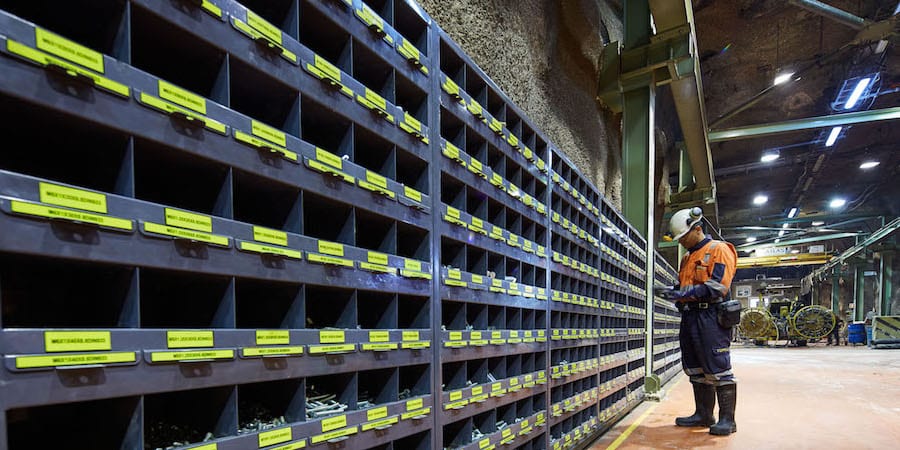
Create stable, fulfilling jobs to fully benefit from lean
WOMACK’S YOKOTEN – Toyota’s commitment to employees reminds us that it is impossible to tap into the full potential of lean without providing people with stable, gratifying employment.
Words: Jim Womack, Founder and Senior Advisor, Lean Enterprise Institute
Photo credit: Radu Bercan / Shutterstock.com
In 1950, after a quarter of its workforce was dismissed during a banker-imposed reorganization to save the company during a depression in Japan, Toyota made a deal with its remaining employees: If they worked in the strikingly new ways being introduced by Taiichi Ohno and his collaborators, the company would commit itself to never laying off people in the future.
Outside of Japan this was called “lifetime employment”, which Toyota never promised. No company living in a market economy can. What Toyota did promise was to promote from within, to teach employees how to continually improve their work so the company would always be growing by gaining on its competition, and to keep enough cash in reserve so it could hold employment stable through the inevitable troughs in the auto market. Its objective was good, stable, long-term jobs.
Promising stability through economic cycles was a particular challenge because the American government wanted to “liberalize” the Japanese economy by requiring large companies to trade their shares on the stock market. And in times of financial crisis, publicly traded companies in labor-intensive industries find it almost impossible to avoid layoffs in order to protect profitability, save the jobs of senior managers, and ward off outsiders who might take them over.
Fortunately, Toyota devised a countermeasure in the form of the Toyota Group of 300 companies spun out of the vertically integrated Toyota Motor Company in 1947. When these companies issued shares – as almost all did by the 1960s – the majority were bought by the other members of the Group with only a minority of shares sold to outsiders on the stock market. This system of “hostage equity”, in which each company agreed not to sell other companies’ shares to outsiders in return for the same treatment of their own shares, meant that managers could put the interest of employees first in times of crisis without fear of being fired, acquired by outsiders, or broken up by corporate raiders.
A parallel feature of the system Toyota created was its ability to hold cash reserves far larger than what finance professors and stock analysts thought were appropriate. The Group companies could do this because hostage equity meant they were unconcerned about short-term share prices (no one inside the Group was going to sell any shares) and they were impervious to raiders who might seek control of their companies for their cash. (Boone Pickens, the American raider, tested the defenses in 1988 by trying to gain control of Toyota Group electrical equipment supplier Koito. He never found even one company in the Group willing to sell shares and gave up.)
With all of these mechanisms in place, the balanced scorecard at Toyota could place customers first followed by employees, leaving the short-term concerns of shareholders in the rear. By adhering to these priorities in the short term, Toyota believed its shareholders, inside and outside, would do fine in the long term. And they have.
The true test of Toyota’s promises to its employees came nearly 60 years later in the financial and the safety recall crises of 2009-10. From its early days Toyota had hired a small fraction of its workforce on temporary contracts and in the crisis, as sales plummeted, these contracts were not renewed. But across the world Toyota stood behind every member of its permanent workforce even when sales truly tanked and many workers were doing kaizen projects rather than producing vehicles.
Toyota got through the twin crises with its problem-solving workforce intact and with a strengthened sense of reciprocal obligation – employees for the company, the company for employees. And, as I noted last month, it’s doing just fine today despite the turbulence of the mobility system of which it is a part.
By contrast, during the financial crisis, many publicly traded companies – in automotive and across the global economy – weakened their already fraying ties to their employees by making clear that the interests of the senior managers and shareholders came first. Layoffs, many permanent, were required to save some companies (who like Toyota in 1950 forgot to bring cash to the crisis), but there was no Toyota-in-1950 moment of enlightenment on the other side.
In particular, the financial world seems not to have learned anything about how companies create value for the long term. I recently read a critique of the Ford Motor Company’s cash position ($28 billion) from David Whiston, a prominent Wall Street analyst: “They have too much cash on their balance sheet and they’re not doing much with it. They are super protected against a downturn and that’s great, but you don’t need that much.” Which is quite right, if management is happy to use its employees as its financial shock absorber in the next downturn. (Fortunately, Ford is still controlled by the Ford family and remembers that it only survived the 2009 crisis because it had raised a mountain of cash – $26 billion – in 2006.)
What’s the relevance of this to the Lean Community? The methods of problem solving and lean management we teach can only work their full magic in organizations that defend and continually improve their workforce. And defending and improving the workforce requires protecting employees through promotion practices, equity structures, and cycle endurance mechanisms (lots of cash) that address the problems of the long run rather than the short run.
I now try to talk about this with senior managers in organizations I encounter. I say it’s not enough to deploy lean practices across their organizations and to promise not to lay off any employee due to kaizen. It’s also necessary to create reciprocal obligations with employees and employment stability for the long run in order for lean methods to achieve their potential. I can’t hope to change senior managers’ minds instantly about the feasibility of creating this virtuous circle, but if we all engage in similar conversations over time perhaps we can.
Creating stable lean enterprises provides several benefits for society more broadly. In my remarks at the European Lean Summit in Venice two weeks ago (my presentation is available below), I argued that the great anxiety in the world today is jobs and fulfilling work. So, what we really need to focus on now is what I call “social heijunka”. That means leveling the turbulence in society by making sure people have stable jobs, good jobs that provide for a comfortable living, and jobs with fulfilling work. And I think that is what the lean business system with the robust stabilization mechanisms inspired by Toyota’s example can provide.
A key need, obviously, is to continually increase the value each employee is able to create, so that stable, well-paid and fulfilling jobs are feasible. No company can pay its employees more than the value they create as judged by customers. But focusing on this task – creating better and more secure jobs for everyone by improving the work of every worker and the systems that stabilize those jobs – puts our message in a broader social context. We will be talking about what’s good for society, not just what’s good for individual businesses and their owners. As we look ahead to the next phase of the Lean Movement, I think this is the key to our being relevant and exciting, and I’ll have more to say about social heijunka in future columns.
THE AUTHOR

Read more


OPINION – In a competitive and unpredictable market, the temptation to rely on technology is always strong, but experience proves that there is no better support than people's ability to learn and adapt to new situations.



CASE STUDY – Over the past four years, by developing its kaizen capabilities and crafting a better approach to maintenance, a Turkish gold mine has significantly reduced its extraction costs.


FEATURE – Why do lean transformations benefit from the support of a sensei? Michael Ballé discusses how we typically need help to take the emotions out of the work and go down uncomfortable paths.


FEATURE – To boost the “adoptability” of Lean and sustain it over time, it’s necessary to develop institutions that support our improvement efforts without making processes more bureaucratic.

